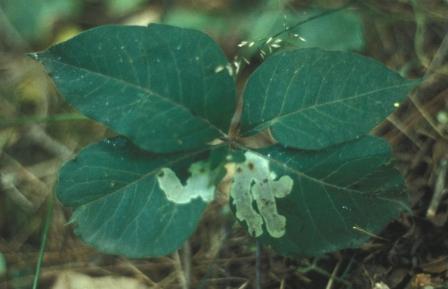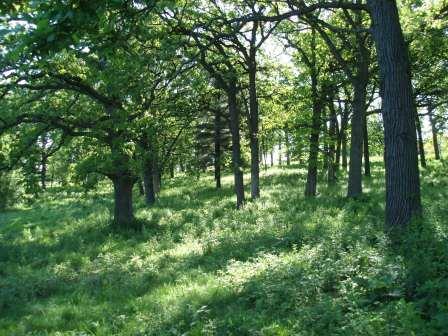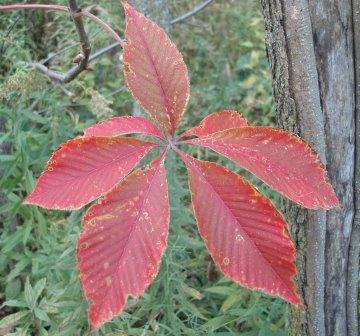by Carl Strang
As always, fascination with dinosaurs in particular produced plenty of interesting new Mesozoic Era studies published in 2014. Those focused on the evolution of birds will follow next week.

Dinosaurs weren’t the only Mesozoic life forms, but they certainly are the first to come to mind.
Grady, John M., et al. 2014. Evidence for mesothermy in dinosaurs. Science 344:1268-1272. They looked at growth rates as indicated by bone rings, comparing such data to present-day ectotherms, endotherms and mesotherms such as certain sharks, tuna, sea turtles and echidnas. They found that the dinosaurs fit with that last group. Given the climatic warmth of the Mesozoic, this is a feasible result, giving them an advantage over slower ectotherms without the higher energy demands of endotherms.
Motani, Ryosuke, et al. 2014. A basal ichthyosauriform with a short snout from the Lower Triassic of China. Nature, DOI: 10.1038/nature13866 This fossil, Cartorhynchus lenticarpus, from 4 million years post-Permian mass extinction, fills the gap between terrestrial reptiles and marine ichthyosaurs. The 16-inch-long animal had flippers but strong wrists, a short snout, and heavy bone structure. It is regarded as an amphibious reptile that lived in coastal China, the heavy bones having been predicted as necessary for withstanding wave forces.
Koschowitz, Marie-Claire, Christian Fischer, and Martin Sander. 2014. Beyond the rainbow. Science 346:416-419. They review recent literature and paint a picture of dinosaurs first evolving proto-feathers as insulation, facilitating their new capacity for greater metabolism. This was especially important in the theropod lineage that ultimately led to birds, as body size decreased over time. Such a covering would have hidden the skin’s structural color, however, taking away any prismatic or reflective production of iridescence, blues, greens, and ultraviolets, and losing them as a signal. That loss provided a selective advantage to vaned feathers, which recovered the structural color capability. The vaned feather in turn provided the foundation, eventually, for flight. These steps are dependent upon the dinosaurs’ color vision, which they share with a broad range of reptiles.
Godefroit, P., et al. 2014. A Jurassic ornithischian dinosaur from Siberia with both feathers and scales. Science 345:451-455. Kulindadromeus zabaikalicus was found in a new site in Siberia. It is a basal ornithiscian that had filamented feathers, for the first time proving these were not limited to the theropods (earlier, fossil ornithiscians have been found with bristle-like feathers). Filamented ones were found on the limbs, and the rest of the body was largely covered in bristle-like feathers. The tail and lower legs were scaled. This dinosaur was around 1m long.
Button, D. J., E. J. Rayfield, and P. M. Barrett. 2014. Cranial biomechanics underpins high sauropod diversity in resource-poor environments. Proceedings of the Royal Society B: Biological Sciences 281 (1795): 20142114. DOI: 10.1098/rspb.2014.2114 They reconstructed the anatomy of coexisting sauropods, Camarasaurus and Diplodocus, to get an idea of how two such enormous animals could coexist in an arid, relatively plant-poor, environment. Camarasaurus had a strong bite, and could handle tougher vegetation such as woody plants. Diplodocus had a weaker bite but stronger neck, so it would have had an easier time pulling out and handling softer plants like ferns.
Geological Society of America. 2014. “Kung fu stegosaur: Lethal fighters when necessary.” ScienceDaily, <www.sciencedaily.com/releases/2014/10/141021114903.htm>. Robert Bakker and colleagues described an allosaur pubis bone which developed an infection following a wound from a stegosaur tail spike. The infection probably killed the predator. The wound is an indication of an accurate defensive tail swing by the stegosaur.
Grossi, B., et al. 2014. Walking like dinosaurs: chickens with artificial tails provide clues about non-avian theropod locomotion. PLoS ONE 9(2): e88458. doi:10.1371/journal.pone.0088458 They raised chickens with artificial tails attached, to see if this change in center of mass would change their locomotion to match that theorized for theropods. The experiment was successful, producing birds that moved more through use of femoral movement rather than the more crouched, knee focused gait of birds.
Andrew A. Farke, W. Desmond Maxwell, Richard L. Cifelli, Mathew J. Wedel. 2014. A ceratopsian dinosaur from the Lower Cretaceous of western North America, and the biogeography of Neoceratopsia. PLoS ONE 9(12): e112055. doi:10.1371/journal.pone.0112055 They describe the earliest known North American ceratopsian, a crow-sized dinosaur similar to contemporary similar Asian species, providing evidence for a connection between the continents around that time. Montana is the location of the find.
Ibrahim, Nizar, et al. 2014. Semiaquatic adaptations in a giant predatory dinosaur. Science 345:1613-1616. They describe a partial skeleton of Spinosaurus aegyptiacus from Morocco. It shows several adaptations for a semiaquatic lifestyle, including nostrils brought back to the midpoint of the skull; an elongate neck and trunk that shift the center of mass forward; a downsized pelvic girdle; short limbs; solid limb bones (helpful to counter buoyancy when swimming); and muscle attachment indicators and flat-bottomed claws on the hind feet “consistent with aquatic foot-propelled locomotion.” The long rays on the dorsal spine “may have been enveloped in skin that functioned primarily for display on land and in water.” Its age is estimated at 97 million years. The elongate toothy snout may indicate this was largely a fish predator. It was found in river sediments, in a river system where there were common sharks, sawfish, coelacanths, lungfish and others.
Krause, David W., et al. 2014. First cranial remains of a gondwanatherian mammal reveal remarkable mosaicism. Nature, DOI: 10.1038/nature13922 As described in a ScienceDaily article. This describes the unprecedented find of a complete skull from Madagascar, a 20-pound mammal contemporary with the latest dinosaurs, and by far the largest southern continent mammal from the Mesozoic (this is only the third Cretaceous mammal skull from the entire southern hemisphere). Vintana sertichi was a gondwanatherian, a southern hemisphere group previously known only from a few teeth. It appears to have been a nocturnal herbivore, with very large eye sockets and anchors for strong chewing muscles. The details of the skull show that this group is close to the multituberculates and another odd group, the Haramiyida.

















